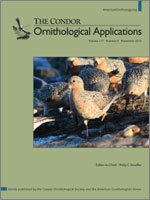Faszinierende Welt der Eulen: Fascinating World of Owls by Friedhelm Weick. 2013. Neumann-Neudamm, Melsungen, Germany. 224 pages. £85.99 (hardcover). ISBN 978-3-7888-1497-7.
Fascinating World of Owls by Friedhelm Weick provides a well-rounded overview of the many different species of owls found throughout the world. The illustrations are engaging and certainly the strong point of the book, though it is hard not to make comparisons to John James Audubon's famous work, in which case Weick's illustrations fall slightly short. That said, Weick's illustrations possess a whimsical quality that is quite appealing.
Overall, the book presents mostly accurate information regarding the diversity of owl taxa (128 of the ~250 species worldwide), which is a daunting feat for any author. The Introduction provides a brief, yet sufficient, overview of the physical structures used in identification (size, feathers, talons, etc.) and illustrates species from the main genera. Several of the figures in the book are taken directly from Owls of the World (König and Weick 2008), and it would appear that Weick's goal was to whittle down the information contained in that book for the use of laypersons, though this is not clearly stated in the Preface. This book relies heavily on the physical descriptions of each species (presumably for identification purposes), but it would not be a suitable field guide. The species descriptions contain quite a lot of information (descriptive notes, distribution, conservation status, habitat description, voice/call, prey items, breeding information, and general taxonomic remarks), though they could have been improved by adding a simple world range map to illustrate each distribution. It is quite evident that a lot of research has gone into compiling the information in this book; however, most of the information has not been properly referenced.
The text contains a few errors. For example, on page 7, “Brighton Young University” is meant to be “Brigham Young University”; on page 19, figure 5, number 6, “bristles, lores” is actually indicating only rictal bristles, and not lores; and in the same figure, number 11, “throt” is meant to be “throat.” Most distracting were the numerous typographical errors and extremely choppy English prose throughout the text. Even the back cover contains a spelling error (“spezialised” instead of “specialised” or “specialized”). It would have benefited the author greatly to have sought editing advice from a fluent English writer, and where were the publisher's copyeditors?
Although the book's presentation (half German and half English) is not ideal, it may have been more practical than the alternative of printing two separate versions. This split format is easy enough to navigate, but it is a bit problematic with regard to some of the figures and captions. The formatting also places large sections of the species accounts and plates out of order and on separate pages. While this is not a massive issue for a reader to overcome, it is mildly difficult to compare species descriptions to the corresponding plates. On a similar note, three species have written descriptions but no illustrative plates: Himalayan Wood Owl (Strix nivicola, p. 140); Mountain (Northern) Pygmy-Owl (Glaucidium gnoma, p. 160); and Short-eared Owl (Asio flammeus, p. 206). The Preface clearly states that the book cannot illustrate every owl species, so I found it odd that the descriptions of these three species were included seemingly randomly without illustrations.
In summary, I do feel that this book has merit, especially for laypersons with a general interest in owls, and certainly for those interested in ornithological artistry. I would recommend further editing of the English translation, because the typographical errors are distracting and detract from the project as a whole. Again, the illustrative plates are the book's strong suit, and in my opinion it would have been better to focus more on the illustrations (offering more species, perhaps) and less on the information for each species account. For any serious ornithologist seeking a comprehensive source on owls, I would recommend far better, and more comprehensive, sources such as Owls of the World (König and Weick 2008). All in all, though, this book offers a fairly delightful look into the species diversity of the “fascinating world of owls” for the curious reader.






